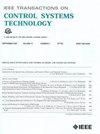基于云的暖通空调控制隐私保护框架
IF 3.9
2区 计算机科学
Q1 AUTOMATION & CONTROL SYSTEMS
引用次数: 0
摘要
这项工作的目标是:1)开发一个加密的基于云的采暖、通风和空调(HVAC)控制框架,以确保占用信息的隐私;2)降低加密HVAC控制的通信和计算成本;3)在基于事件的加密HVAC控制系统中,通过触发时间实例减少隐私信息的泄露。建筑物的占用情况是敏感的私人信息,可以通过基于云的HVAC控制器使用HVAC传感器测量来准确推断。为了确保占用信息的私密性,在我们的框架中,HVAC系统的传感器测量在与云控制器通信之前通过完全同态加密(FHE)技术进行加密。我们首先开发了一种加密的快速梯度算法,该算法允许云控制器通过使用加密的HVAC传感器测量解决两个模型预测控制(MPC)问题来调节建筑物的室内温度和二氧化碳。接下来,我们开发了一种事件触发控制策略,以降低加密HVAC控制的通信和计算成本。我们将事件触发策略的优化设计作为一个最优控制问题,其目标是最小化控制和通信成本的线性组合。利用Bellman最优性原理,研究了最优事件触发策略的结构性质,证明了最优事件触发策略是当前状态、最后一次与云通信状态和最后一次与云通信时间的函数。通过引入两种新的状态,我们还证明了事件触发策略的最优设计可以转化为马尔可夫决策过程。由于触发时间实例没有加密,因此存在云可能使用它们推断敏感信息的风险。为了降低这种风险,我们引入了两种随机触发策略,通过触发时间实例来减少私有信息的泄漏。最后,我们利用TRNSYS模拟器对所开发的加密HVAC控制框架的性能进行了研究。数值结果表明,该框架不仅保证了室内温度和CO2的有效控制,而且将加密HVAC控制的计算和通信成本降低了至少60%。本文章由计算机程序翻译,如有差异,请以英文原文为准。
A Privacy-Preserving Framework for Cloud-Based HVAC Control
The objective of this work is: 1) to develop an encrypted cloud-based heating, ventilation, and air-conditioning (HVAC) control framework to ensure the privacy of occupancy information; 2) to reduce the communication and computation costs of encrypted HVAC control; and 3) to reduce the leakage of private information via the triggering time instances in event-based encrypted HVAC control systems. Occupancy of a building is sensitive and private information that can be accurately inferred by cloud-based HVAC controllers using HVAC sensor measurements. To ensure the privacy of the occupancy information, in our framework, the sensor measurements of an HVAC system are encrypted by a fully homomorphic encryption (FHE) technique prior to communication with the cloud controller. We first develop an encrypted fast gradient algorithm that allows the cloud controller to regulate the indoor temperature and CO2 of a building by solving two model predictive control (MPC) problems using encrypted HVAC sensor measurements. We next develop an event-triggered control policy to reduce the communication and computation costs of the encrypted HVAC control. We cast the optimal design of the event-triggering policy as an optimal control problem wherein the objective is to minimize a linear combination of the control and communication costs. Using Bellman’s optimality principle, we study the structural properties of the optimal event-triggering policy and show that the optimal triggering policy is a function of the current state, the last communicated state with the cloud, and the time since the last communication with the cloud. We also show that the optimal design of the event-triggering policy can be transformed into a Markov decision process (MDP) by introducing two new states. As the triggering time instances are not encrypted, there is a risk that the cloud may use them to deduce sensitive information. To mitigate this risk, we introduce two randomized triggering strategies that reduce the leakage of private information via the triggering time instances. We finally study the performance of the developed encrypted HVAC control framework using the TRNSYS simulator. Our numerical results show that the proposed framework not only ensures efficient control of the indoor temperature and CO2 but also reduces the computation and communication costs of encrypted HVAC control by at least 60%.
求助全文
通过发布文献求助,成功后即可免费获取论文全文。
去求助
来源期刊

IEEE Transactions on Control Systems Technology
工程技术-工程:电子与电气
CiteScore
10.70
自引率
2.10%
发文量
218
审稿时长
6.7 months
期刊介绍:
The IEEE Transactions on Control Systems Technology publishes high quality technical papers on technological advances in control engineering. The word technology is from the Greek technologia. The modern meaning is a scientific method to achieve a practical purpose. Control Systems Technology includes all aspects of control engineering needed to implement practical control systems, from analysis and design, through simulation and hardware. A primary purpose of the IEEE Transactions on Control Systems Technology is to have an archival publication which will bridge the gap between theory and practice. Papers are published in the IEEE Transactions on Control System Technology which disclose significant new knowledge, exploratory developments, or practical applications in all aspects of technology needed to implement control systems, from analysis and design through simulation, and hardware.
 求助内容:
求助内容: 应助结果提醒方式:
应助结果提醒方式:


